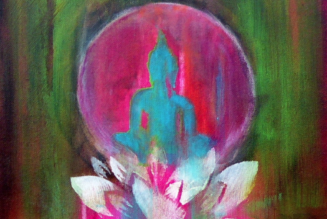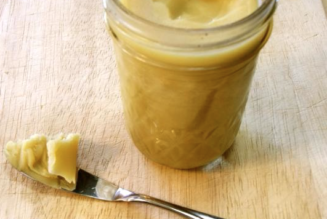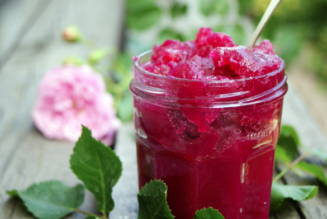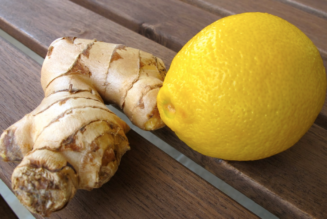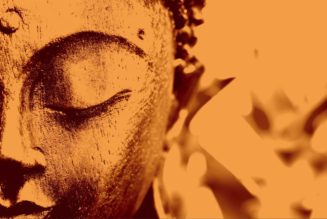Ayurveda – The Movement Of Vata Dosha
Ayurveda is the science of life. The science of Ayurveda explains that the human body is a replica of the vast external universe recognizing each individual to be an integral part of the entire cosmos. A unique aspect of Ayurveda is the explanation of three doshas called vata, pitta, and kapha. We can think of these three doshas as the guiding principles that keep all our bodily functions balanced and healthy. Not only do the doshas govern our bodily functions but from a more truer perspective – they are the governing principles of nature. For now, we shall consider vata dosha.
“That which moves things.”
Vata Dosha
The concept of vata originates from the Sanskrit word “vyv” [vaya] which implies ‘that which moves things’. Eventually, vata began to be depicted as wind. In essence, vata is the principle and dynamic force which governs all movement.
Balanced Vata Dosha:
When vata is balanced it promotes great creativity, evokes feelings of freshness and lightness which springs forth the sense of happiness.
Imbalanced Vata Dosha:
When vata becomes imbalanced it then promotes dispersing qualities which can then make the mind and body vulnerable to a wide-range of health conditions. Click Here: To Learn More About Vata Types
The Movement Of Vata Dosha
Ayurveda recognizes that each individual has a unique balance and that this balance can become disturbed by various factors such as diet, lifestyle, seasonal changes and even the way we think and perceive our experiences. Let us now see how various factors express themselves in the realm of vata dosha.
Stage One – Accumulation [Sanchaya]
During the initial stage of vata imbalance the cold quality accumulates which may create conditions of constipation, lower abdominal distention, and gas. Likewise, this increased sensitivity to cold weather can also creates pain and stiffness in muscles and joints. The natural inherent tendency is to warm the stiff muscles and painful joints. In the same manner, our initial goal is to create this same sense of warmth within to help balance the cold quality of vata dosha.
Quality – Cold
The exposure to cold food and cold climate can aggravate vata dosha.
Introduce warm qualities such as:
- diet: warm and spicy food
- warming spices: ginger, black pepper, cumin, and mustard seeds
- lifestyle: dress warm, avoid cold climates and air-conditioning
- warm castor oil compress on the abdominal region
- warm water bottle to the abdomen
- warm sesame oil basti/enema
Stage Two – Aggravation [Prakopa]
As vata dosha continues to become further imbalanced with cold, dry, and light qualities it soon becomes aggravated primarily in the colon with symptoms of fullness in the abdomen along with the above-mentioned symptoms of constipation, lower abdominal distention and gas.
Qualities: Cold – Dry – Light
This may occur with increased intake of raw food, exposure to gusty winds especially during the dry and cold autumn season.
Balance cold, dry, and light qualities with:
- regular oil massage [i.e. abhyanga]
- adding extra oil or ghee to food
- additional warm clothing when exposed to cold & dry climate
Organic Massage Oil
Base oils infused with a decoction of one or more Ayurvedic herbs combine nourishing and soothing qualities of oil with the healing properties of the herbs.
– warm dashamula tea basti/enema
– triphala guggulu
– gandharva haritaki
Stage Three – Spread [Prasara]
As vata dosha continues to become further imbalanced the mobile quality now allows vata to spread from the gastrointestinal tract into the general circulation. The dry and light qualities of vata can affect blood tissue [rasa dhatu] which can create signs and symptoms of dehydration, dry skin, palpitations, ringing in the ears, cold hands and feet. Likewise, the mobile qualities of vata can begin to create physical symptoms of tics, spasms, tremors and even uncertainty [“shakiness”] within the mind; amongst many other conditions.
Qualities: Cold – Dry – Light – Mobile
Excess mobile quality of vata may arise with increased physical and mental activities such as running, jumping, flying and excess stimulation of the mind such as loud noise, excessive talking, etc.
Balance cold, dry, light, and mobile qualities with:
- rest & relaxation
- abhyanga [oleation massage]
- snehana [self-massage with oil]
Prevention Is Better Than Cure
At this point, vata has now entered the general circulation and has the ability to cause disease if it enters into certain bodily tissue. Therefore, appropriate measures should be taken in order to prevent the progression of disease.
Abhyanga [Oil Massage] & Svedana [Sweating]
Vata Types may use sesame oil for the oil massage followed by swedana [sweat therapy] using a steam box under the guidance of a qualified Ayurvedic professional. Likewise, vata types may want to consider adding a few drops of nirgundi oil to the steam box.
Pitta Types may use sunflower oil for the oil massage followed by swedana [sweat therapy]. Likewise, pitta types may want to consider adding a few drops of sandalwood oil to the steam box during swedana – sweat therapy.
Kapha Types may use olive oil for the oil massage followed by swedana [sweat therapy]. Kapha types may want to consider using a few drops [i.e. 3-5 drops] of eucalyptus oil added to the steam box during swedana – sweat therapy.
Stage Four – Deposition [Sthana Samshraya]
This stage in the progression of vata dosha is particularly significant because the subtle quality of vata allows for the entry of vata into weakened tissue [i.e. impaired dhatu agni]. If the integrity of each tissue is intact with optimal function [i.e. dhatu agni] – then vata dosha will not be able to enter into tissue and will therefore return back to the gastrointestinal tract – where it belongs.
Stressing The Importance Of:
- preventing the progression of doshic imbalance
- maintaining healthy tissue integrity [agni]
Qualities: Cold – Dry – Light – Mobile – Subtle
As the qualities of vata dosha circulate through the body, the clinical manifestation of disease depends on which quality of vata predominates and which tissue is most influenced by the predominating qualities of vata dosha.
Very Briefly
Dhatus are similar to tissue. Dhatu comes from the word “dha” which means ‘to hold’. Therefore, dhatus are “that” – which hold certain functions; which is similar to our modern understanding of bodily tissue. We can think of dhatu agni as being the tissue’s protective barrier to disease. If this tissue barrier [dhatu agni] becomes impaired, this allows the qualities of vata dosha to enter the tissue and begin to create clinical signs and symptoms of disease.
- Impaired Rasa Dhatu allows for the subtle and mobile qualities of vata to enter into rasa dhatu [plasma] creating symptoms of fever with chills [vata jvara], dehydration, fatigue, generalized body ache, etc.
- Impaired Rakta Dhatu allows vata to enter rakta [blood] dhatu [rakta gata vata] which may lead to impaired circulation creating symptoms of poor circulation, cold hands and feet, blood clots, varicose veins, aneurysms, etc.
- Impaired Mamsa Dhatu allows vata to enter mamsa [muscle] dhatu [mamsa gata vata] and create symptoms of muscle spasms – tics, restless leg syndrome muscle wasting, etc.
- Impaired Meda Dhatu allows for vata to enter meda [adipose] dhatu [meda gata vata] which can lead to lack of lubrication with cracking and popping of ‘dry joints’, dry skin, hernias, displacement of internal organs [i.e. descending kidneys and/or spleen; due to diminished supportive omentum [adiposity].
- Impaired Asthi Dhatu allows for vata to enter into asthi [bone] dhatu [asthi gata vata] which can create symptoms of osteoporosis, lower back pain, hair loss, splitting hair, receding gums, ringing of the ear [ear drum – specialized bone], and even thyroid dysfunction.
- Impaired Majja Dhatu allows for vata to enter into majja [nerve/bone marrow] tissue [majja gata vata] and may create neurological symptoms of tingling and numbness in extremities, cluster headaches, tics, spasms, neuralgia and sciatica, etc.
- Impaired Shukra/Artava Dhatu allows for vata to enter into shukra/arthava [male & female reproductive dhatu and create symptoms of various male and female health concerns.
Stage Five – Manifestation [Vyakti]
During this stage of the disease process the rough quality of vata predominates and now the full manifestation of disease occurs. The rough quality of vata can create conditions of fissures, fistulas and excessive rough and scaly skin [i.e. psoriasis] amongst many other health concerns.
Qualities: Cold – Dry – Light – Mobile – Subtle – Rough
Rough and raw foods will further aggravate the qualities of vata. Instead, we should consider oily and lubricating qualities such as “maha snehana” – combination of oil, ghee, animal fat and bone marrow – applied at the site of roughness.
Stage Six – Complications [Bheda]
In this final stage of the disease process, the clear quality of vata leads to further complications nearly abolishing or “clearing out” the function of the already weakened tissue. Here, the individual should seek immediate care of a qualified professional.
Qualities: Cold – Dry – Light – Mobile – Subtle – Rough – Clear
Panchakarma
Once the doshas have begun to significantly cause an imbalance or disease, it soon becomes necessary to consider certain purification techniques to cleanse the body of excess doshas and toxins [“ama”]. This purification process is called “panchakarma” which involves five cleansing actions.
Panchakarma is an Ayurvedic purification system which helps to remove impurities and toxins from the physiological channels of the body. With proper purification of the body springs forth greater cellular intelligence allowing for optimal functioning of the body as a whole.
The Five Purifying Actions Of Panchakarma:
- vamana: therapeutic vomiting
- virechana: purgative or laxative therapy
- basti: medicated enema therapy
- nasya: nasal administration of medicated oils
- rakta moksha: blood-letting; purifying blood
Click Here – To Learn More About Panchakarma
Disclaimer:
This information is strictly for educational purpose only and not considered medical advice. Always first discuss with your primary care physician before considering any new health regimen.
Resources:
Ayurvedic Perspective On Selected Pathologies, Vasant Lad, BAMS – 2nd Edition Revised
Textbook Of Ayurveda Vol. 3, Vasant Lad, BAMS
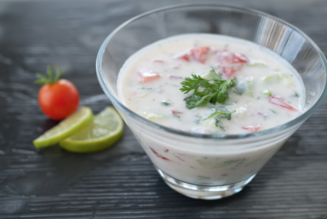
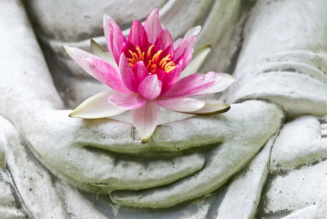
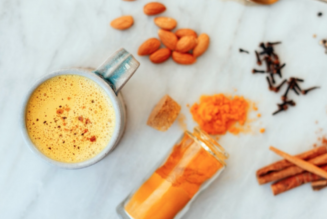
![Female Health: Amenorrhea [cessation of menses] – An Ayurvedic Perspective](https://healthyayurveda.com/wp-content/uploads/2015/07/1.-Amenorhea--327x219.png)
